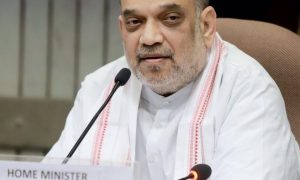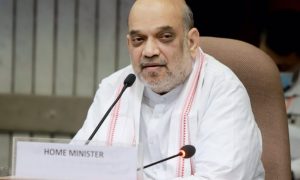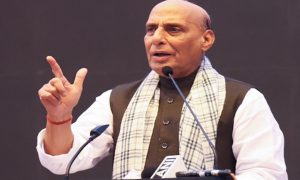The Supreme Court on Tuesday gave its nod for the Central Government to carry forward the land acquisition process in relation to the Rs 10,000 Crore 8 Lane Chennai-Salem highway “Green Field Corridor” project in Tamil Nadu (The Project Director, Project Implementation Unit v. PV Krishnamoorthy and ors).
The top court partly allowed the appeals by the Centre and the National Highways Authority of India (NHAI) against the 2019 Madras High Court judgment which set aside the process, while opining that the High Court had glossed over crucial aspects.
The Bench of Justices AM Khanwilkar, Krishna Murari and BR Gavai rejected the challenge made to the notifications issued in relation to the project under Section 2(2) (declaration of land as a national highway) and 3A (issuance of notification intimating intent to acquire land) of the National Highways Act, 1956.
The Court, however, clarified that it has not expressed any opinions on the correctness of the environmental clearances granted, which may still be questioned before the appropriate forum.
“All contentions available to parties in that regard are left open”, the Court said.
Pertinently, the Supreme Court also agreed with the High Court on the limited aspect that the government had erred in altering land records in their favour prematurely. In this regard, the Supreme Court’s order said:
“By virtue of notification under Section 3A of the 1956 Act, neither the acquiring body nor the NHAI had come in possession of the concerned land nor the land had vested in them, so as to alter the mutation entry in their favour. To that extent, we agree with the High Court that until the acquisition process is completed and possession of land is taken, the question of altering the mutation entry merely on the basis of notification under Section 3A of the 1956 Act cannot be countenanced and, therefore, the earlier entries ought to be restored. That direction of the High Court needs no interference.“
In other respects, the findings of the Court in the matter include:
- The Centre has the legislative competency to issue the challenged notifications. The notifications issued by the Central government under Section 2(2) of the 1956 Act are not ultra vires the Constitution. The Central Government is fully competent to notify “any land” (not necessarily an existing road/highway) for acquisition, to construct a highway to be a national highway.
- Findings of expert bodies in technical and scientific matters would not ordinarily be interfered with by the Courts. There is no substance in the argument that the project is not based on any tangible material. The policy decision of the Central government is backed by the 2018 guidelines, which have not been challenged. It is not for the courts to sit over such decisions as courts of appeal and to disregard it merely because another option would have been more beneficial. The decision in this case cannot be labelled as manifestly arbitrary, irrational or taken in undue haste.
- The High Court has completely glossed over crucial aspects and entered into the domain of sufficiency and adequacy of material including the appropriateness of the route approved by the competent authority. Such enquiry, in the exercise of judicial review, is forbidden.
- At the stage of issuing notifications under Section 2(2) or Section 3A of the 1956 Act, there is no need for Central government to seek prior permission under environmental laws or the forest laws.
- The purpose of a public hearing in Acts concerning National Highways on one hand and under the Environmental Protection Act and forest laws is qualitatively different. In highway matters, the competent authorities need only be satisfied that the acquisition of land in question is for a public purpose. Under forest/environmental laws, however, the competent authority can deny permission for a project if it would cause irretrievable comprehensive impact on the environment or the forests.
- Balancing becomes essential in highway matters to effectuate the public purposes. The executing agency (NHAI) may be able to convince the competent authority that certain remedial steps can minimise or mitigate the environmental impact to the forest and seek conditional approval to execute the project so as to conform to the tenets of sustainable development. If it is referred to a competent authority under environmental/forest laws, such clearance/permission can be granted after the public hearing.
- It is incomprehensible that the Central government is obliged to take prior permission even before the stage of “planning” and “finalisation of the project(s)”, or, in other words, at the stage of issuing notifications under Section 2(2) and Section 3A of the 1956 Act.
- Projects would be paralysed if the Court were to accept the argument that the Central government must follow the comprehensive procedure under the environmental laws and forest laws at the stage of notification under Section 2(2) of the 1956 Act (to declare any stretch/land not being a highway as a national highway). The functioning of the departments responsible for timely execution of such projects would be completely paralysed and depend solely on the outcome of the processes under the environmental laws or forest laws.
- The role of the competent authority under the environmental law or forest law is limited to the scrutiny of the formalized project prior to its implementation to ascertain whether it may have any environmental impact and if so, to impose such conditions to minimise the impact, while keeping in mind the need to fulfil the State’s obligation of sustainable development.
- The environmental impact would be and ought to be measured in relative terms and at the local level and specific to the site. On the other hand, the requirement for road/national highway would essentially be in the larger national interest.
- The prior environmental clearance in terms of 2006 EIA notification is required to be taken before commencement of the “actual construction or building work” of the national highway. That will happen only after the acquisition proceedings are taken to its logical end, when the land finally vests in the NHAI or is entrusted to it by the Central government for building/management of the national highway.
- Before the process of acquisition of land is ripe for declaration under Section 3D (declaration of land acquisition) of the 1956 Act, it would be open to the NHAI to make an application to the competent authority for environmental clearance. That process can be commenced simultaneously or alongside the acquisition process after a preliminary notification under Section 3A of the 1956 Act, for acquisition is issued.
- The necessity of prior environmental/forest clearance would arise only if finally, the land in question is to be notified under Section 3D of the 1956 Act, as being acquired for the purposes of building, maintenance, management or operation of the national highway or part thereof.
The Court, therefore, ruled,
“The challenge to impugned notifications under Sections 2(2) and 3A of the 1956 Act, respectively, is negatived. The direction issued (in paragraph 106 of the impugned judgment) to the concerned authorities to restore the subject mutation entries is, however, upheld … The Central Government and/or NHAI may proceed further in the matter in accordance with law for acquisition of notified lands for construction of a national highway for the proposed section/stretch CKS (NC), being NH Nos. 179A and 179B.”
The Chennai-Salem 8-lane project is a part of the Bharatmala Pariyojana project, which was conceptualized by the Centre for enabling improvement in logistics. As part of the project, in May 2018, the Central government had authorised the issuance of a notification to acquire land to develop a highway spanning about 276 kilometres connecting Chennai and Salem.
The notification was alleged to have been issued while environmental clearances, forest clearances, and final approval by the National Highways Authority of India (NHAI) were pending. The notification issued under Section 3A(1) of the National Highway Act, 1956 was therefore challenged by affected landowners as well as public interest litigants before the Madras High Court, which set aside the acquisition proceedings. The High Court verdict has now been overturned by the Supreme Court.




























 WhatsApp us
WhatsApp us